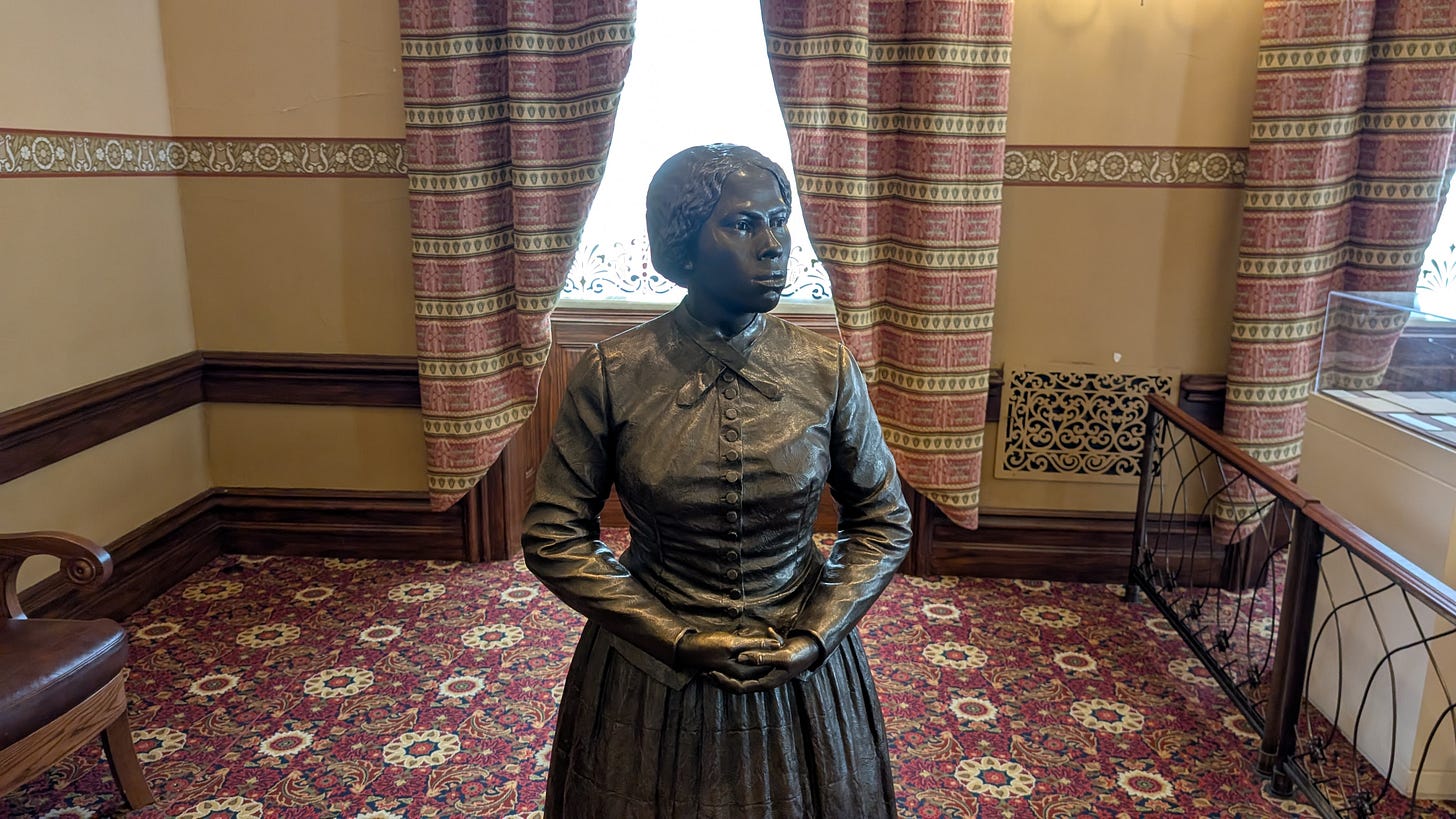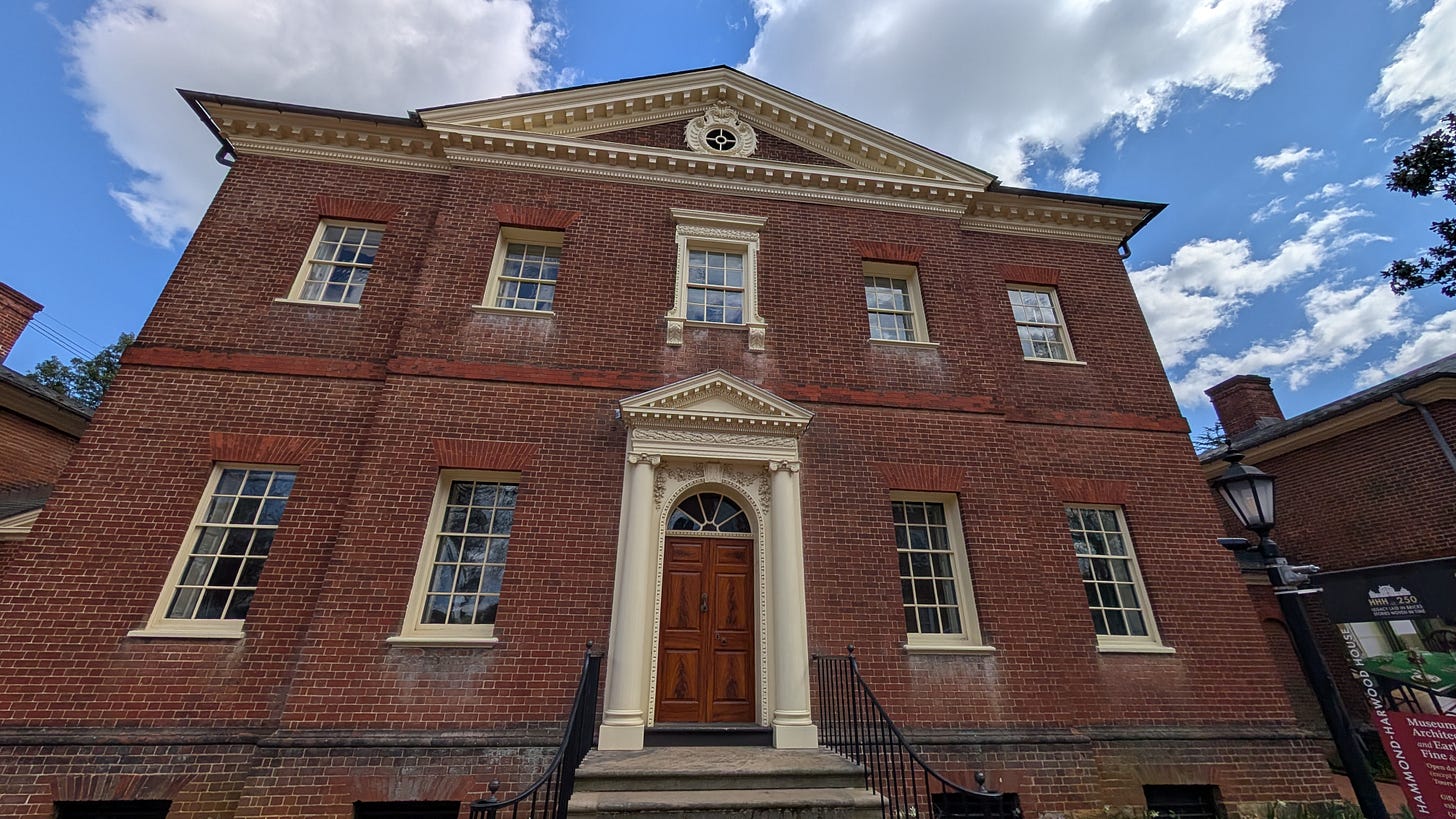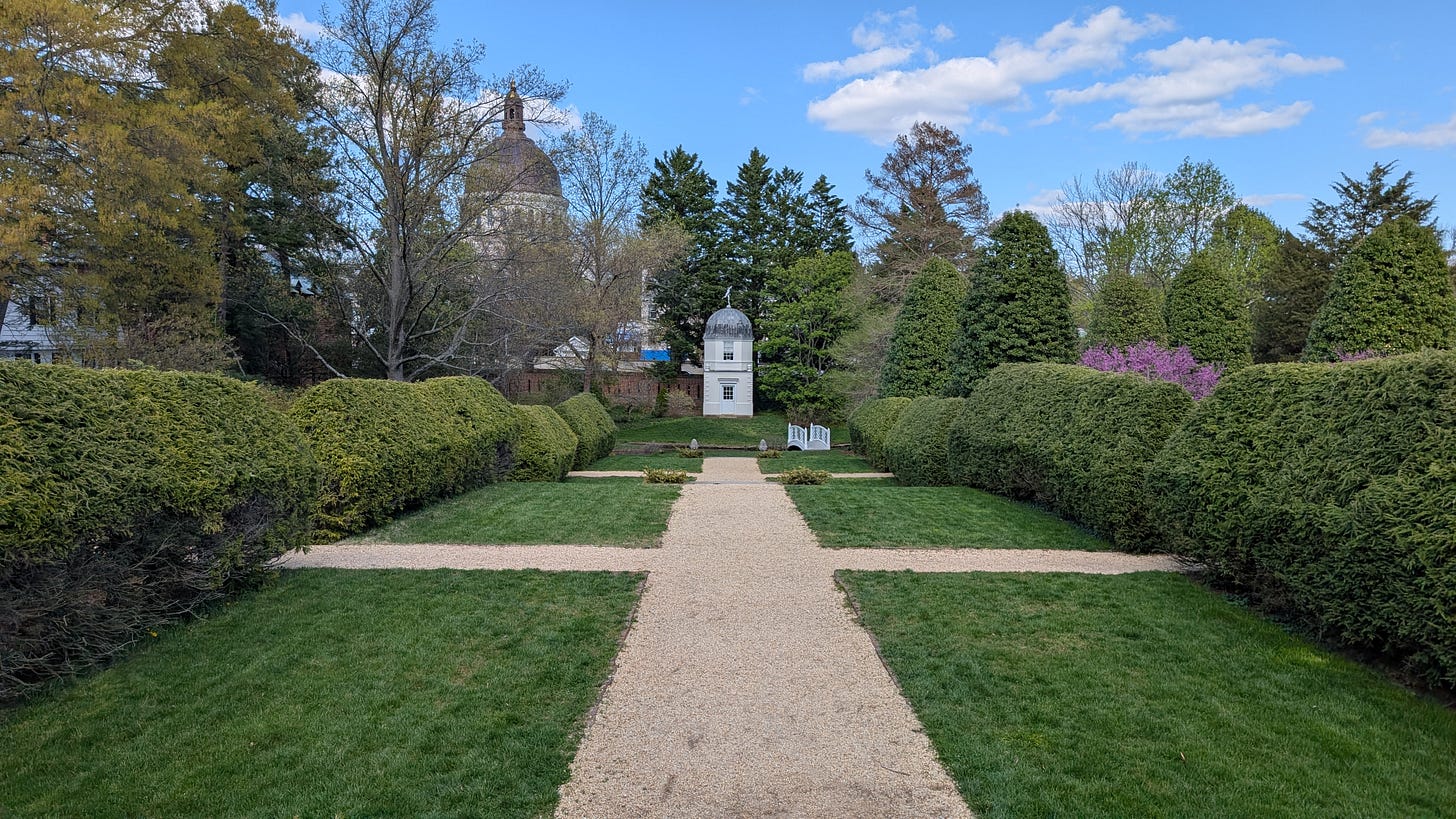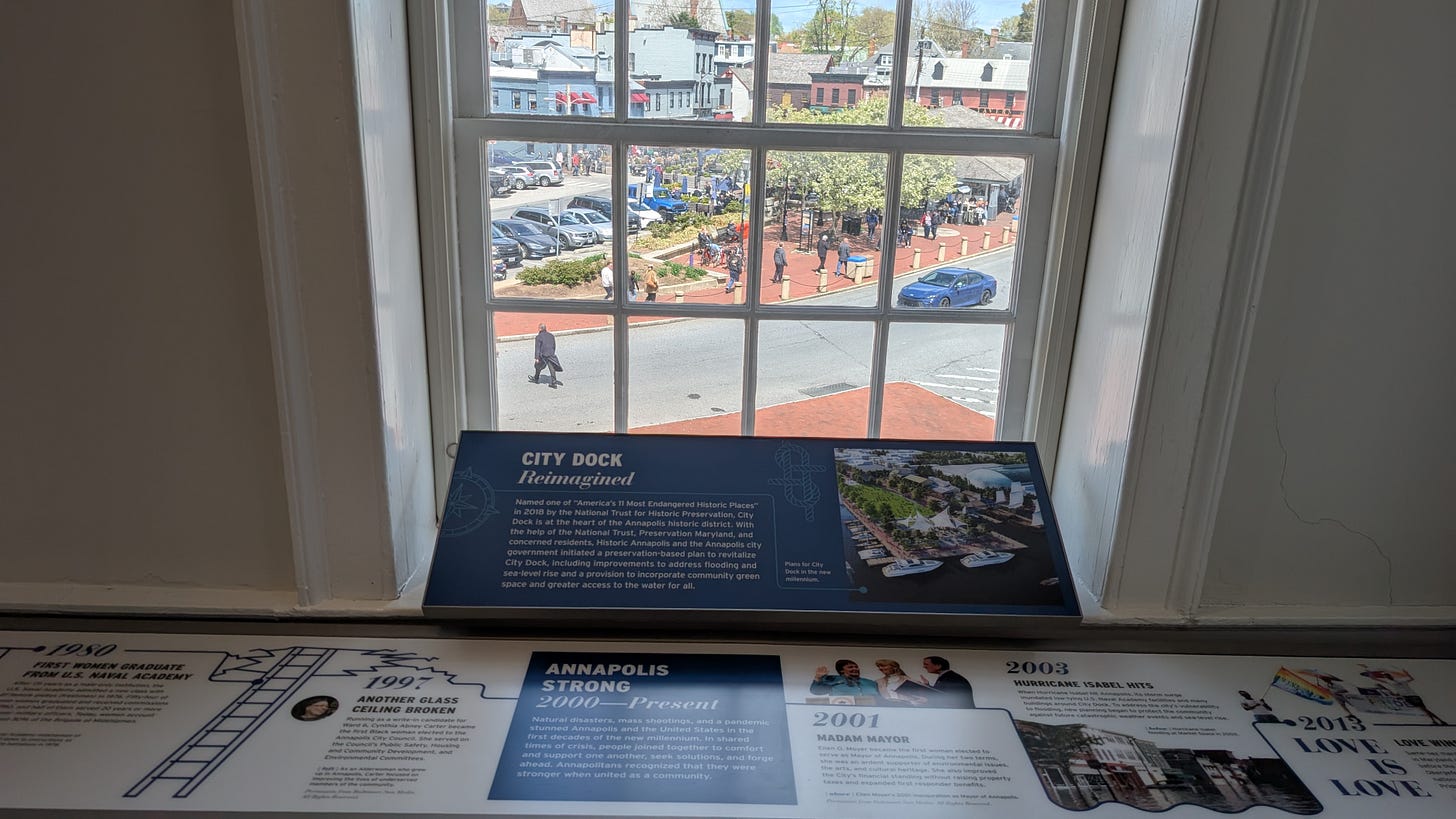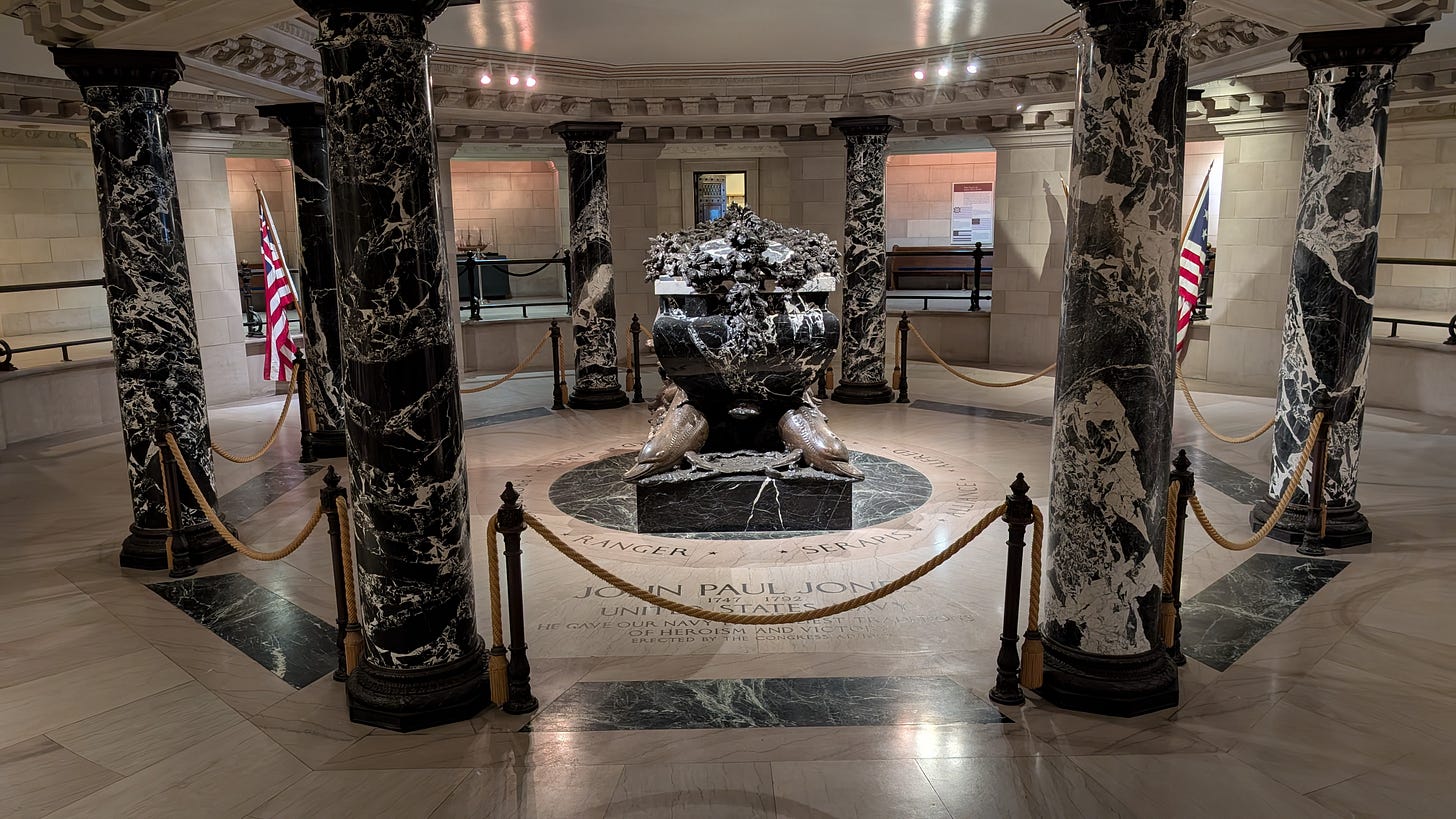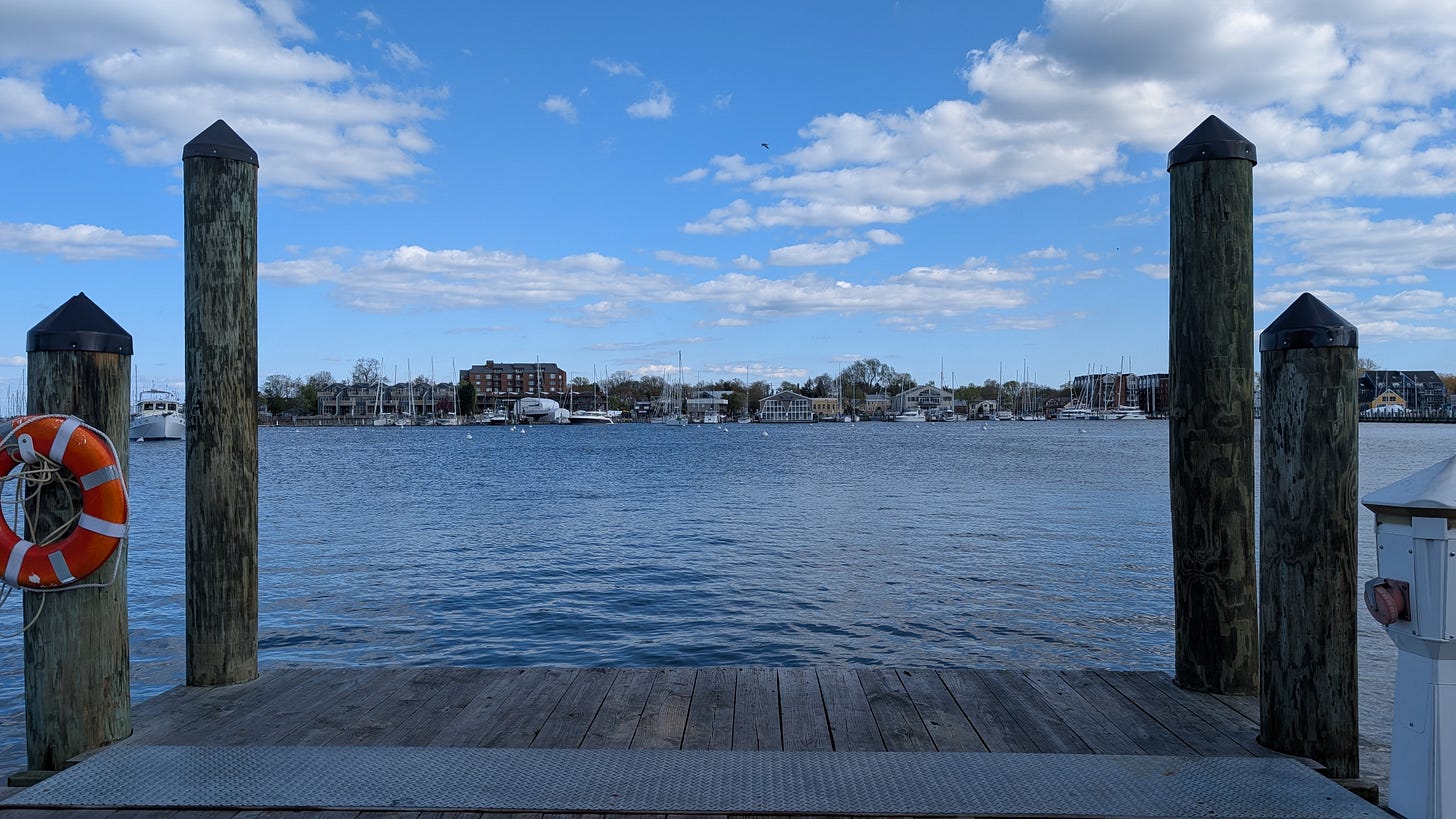Welcome to another Research Notes, where we at History’s Confluences highlight books, articles, and other history-related content that we’ve found interesting, engaging or insightful.1
May is turning into a surprisingly packed month. Right now, my calendar shows two panel appearances, an archaeology commission meeting, my local historical society’s awards ceremony, and a friend’s wedding. It’s busy, but it’s the good kind of busy.
One of these upcoming panels will discuss the history of voting and elections in Alexandria, Virginia. Longtime readers of this blog will remember that I was on a similar panel two years ago, and I’m looking forward to revisiting this history and providing some updates on my research. I’m also very excited to hear what my fellow panelists have to say and to listen to their insights.
In other news, I recently had the chance to swing by Annapolis, Maryland. The capital of the Old Line State has some really great historic sites, and Historic Annapolis has done a great job of fostering the idea of the city as an outdoor museum, where all the structures, waysides, and programs connect to common themes. The highlight for me was standing in the Capitol Building, near the spot where George Washington resigned his commission at the end of the American Revolution.
Oh, and the food was pretty great too!
Books
Don H. Doyle, The Age of Reconstruction: How Lincoln's New Birth of Freedom Remade the World. A sequel of sorts to his previous work The Cause of All Nations: An International History of the American Civil War, this book examines the international situation and events that took place during the Reconstruction Era. While the Civil War saw many European policymakers gleefully watching what they thought was the unraveling of the United States, Reconstruction saw them scale back their imperial ambitions in the Americas and come to terms with a new, more powerful, and more aggressive U.S. Doyle connects events like the fall of Napoleon III’s puppet regime in Mexico, Russia’s sale of Alaska to the United States, and Great Britain’s decision to give dominion status to Canada to the changed international landscape following the Civil War. It’s a fascinating read that helps put Reconstruction in a worldwide context.
Jon Grinspan, The Age of Acrimony: How Americans Fought to Fix Their Democracy, 1865-1915. One of the books I’m using as I prepare for the panel on Monday, Grinspan’s The Age of Acrimony delves into the contested politics (and the voting and election processes) of the post-Civil War era. It’s an engaging book that offers fresh insight to how the election systems changed, how those changes came about, and how they impacted voter turnout and public engagement with the political process.
Web Articles
Honor Cargill-Martin, “Come and Take Them: The Battle of Thermopylae and the making of a political myth.” The story of the 300 Spartans and their last-stand at Thermopylae has captured the imagination of writers, filmmakers, and the general public for generations. But how historically accurate is that narrative? In this engaging piece, Cargill-Martin shines a light on what the sources say about the battle and discusses how the popular narrative of the 300 came about.
Lindsay M. Chervinsky, “Inspiration in an Unexpected Place.” In this article, Chervinsky, the executive director of the George Washington Presidential Library at Mount Vernon, discusses her encounter with an original Washington letter during a trip to England. The story of the letter, which features Washington’s comments on Massachusetts’ 1780 Constitution, is fascinating in and of itself, but Chervinsky also puts the discovery in the context of her own professional and personal journey.
Kevin Levin, “The Contested Civil War Memory at Harpers Ferry.” One of the things I really enjoyed about working at Harpers Ferry National Historical Park was talking to visitors about the various ways that people have remembered John Brown’s Raid and how they’ve tried to influence how others remembered that event and its legacy. In this piece, Levin discusses an upcoming tour he’s leading at the park and how he’ll be using the controversial Heyward Shepherd Memorial to provide insights on history and historical memory. It’s a great introduction both to the monument and to how historians can use public memorials as teaching tools.
TV Recommendations
I don’t normally do television or film recommendations, but I recently finished watching two series that I really enjoyed. Both are technically set in “the past,” even if one of them is a Star Wars show (in my defense, the movies do start with the text “a long, long time ago”).
Wolf Hall: Mirror and the Light. PBS recently aired the series finale of this exceptionally-acted BBC drama. While the original series, which aired in the US in 2015, told the story of Thomas Cromwell’s rise to power as Henry VIII’s right-hand man, this new series chronicles his struggle to keep his position (and his head) as his enemies try to pull him down. Mark Rylance (as Cromwell), Damian Lewis (as Henry), Kate Phillips (as Jane Seymour) and the rest of the cast provide a masterclass in acting and the writing and soundtrack are top-notch. The series takes a number of historical liberties, but that doesn’t stop it from being really a compelling watch. It’s not going to be on the PBS website forever, so catch it while you can.
Andor. Sure, Henry VIII was not a great guy to work for, but at least he wasn’t an evil space wizard that could shoot lightning out of his fingers (that we know of). Set between Revenge of the Sith and A New Hope, Andor tells the story of the early days of the rebellion against Emperor Palpatine and his Galactic Empire through the eyes of resistance fighter Cassian Andor (Diego Luna). The story is a meditation on the nature of totalitarianism and how rebellions against authoritarian regimes arise and grow. Surprisingly grounded (at least for Star Wars), the show offers an engaging story, well-crafted action scenes, and spectacular performances. A Disney+ subscription is required.
And if you’re still reading…
You may have heard about recent cuts and staff layoffs at the Institute for Museums and Library Services and the National Endowment for the Humanities. The grants these agencies offer support the work of historic sites and museums throughout the country, many of which are currently feeling the impact of these cuts. Also impacted are state humanities councils which receive block grants from the federal government that they then distribute to state and local organizations. In Virginia, Virginia Humanities is facing a 20% funding shortfall and is working on raising money to make up the funds. If you’re inclined, money can be donated here: https://www.givecampus.com/campaigns/20184/donations/new?a=10339799&designation=virginiahumanitiesfund
More Photographs from Annapolis
All views expressed in this article are my own and do not represent the views of any of my employers, present or past.
As always, a reminder that just because I’m recommending something doesn’t mean I agree with every argument or conclusion presented in it.








